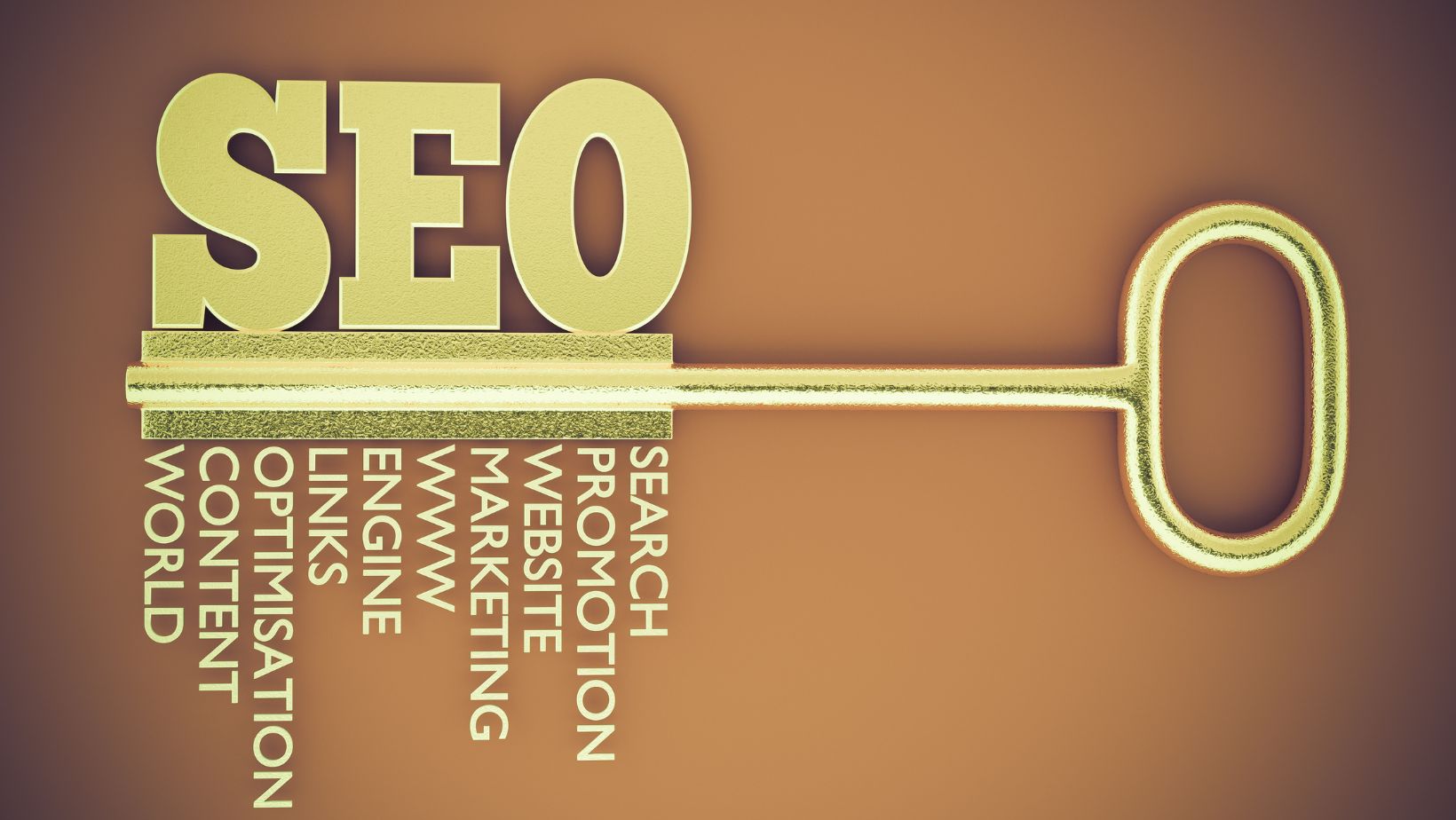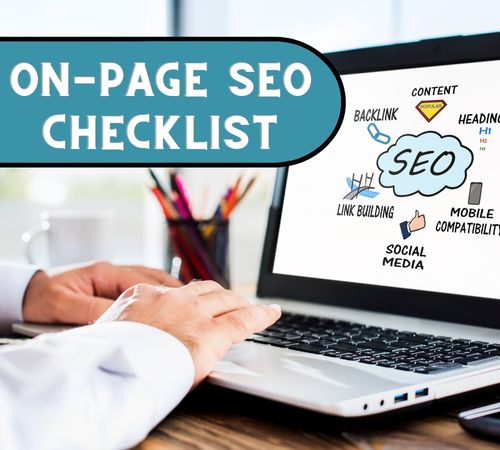
On-page search engine optimization (SEO) refers to any processes that you, as a webmaster, can perform to optimize your web pages in such a way that search engines can easily and efficiently crawl and index your website’s pages. If you’re looking to build or improve your website’s rankings, on-page SEO is an important element of your overall SEO strategy. Here’s a comprehensive on-page SEO checklist to help you optimize your site pages and improve your site rankings.
Table of Contents
Key points :

Use Keywords Strategically
On-page SEO is an important factor in improving a website’s ranking in search engine results pages (SERPs). In order to make sure your web pages are optimized for better rankings, you need to use keywords strategically and follow an on-page SEO checklist.
The first step in optimizing a webpage for on-page SEO is to find the right keywords. This involves researching keyword phrases that are related to your topic and have a good amount of search traffic, yet not too much competition from other websites. Once you’ve identified your target keywords, it’s time to incorporate them into your content.
When writing content for a webpage, be sure to include the target keywords throughout the page. They should appear in the page title, headline, subheadings, body text, and meta description. Additionally, use variations of the keyword throughout the page as well as synonyms and related words. This will help search engines understand what the page is about and how it should be ranked.
Including internal and external links can also help improve the SEO of a webpage. Internal links refer to links from one page on your website to another page on your website. This can help visitors navigate your website more easily, but it also helps search engine spiders crawl through your site and discover more pages. External links refer to links from one page on your website to another page on a different website. This can help establish relationships with other websites and provide additional sources of information.
Finally, make sure to optimize images on your webpage. Add descriptive alt text that accurately describes what’s shown in the image, as this can help search engines determine what the image is about. Additionally, reduce the file size of the image so it loads faster on the page. This can help improve the user experience and ultimately affect rankings.
By following this on-page SEO checklist, you can help make sure your website is optimized for higher rankings in SERPs.
Optimize Your Page Title
One of the most important on-page SEO factors is optimizing your page title. The title of your page is what appears in search engine results and tells users what to expect when they click through. To optimize your page title for better rankings, make sure it is descriptive, relevant to the content, and contains your target keyword. Additionally, you should keep it to around 70 characters or fewer so that it doesn’t get cut off in search engine results. Taking the time to craft a well-optimized page title will help draw more attention to your webpage and lead to higher rankings in search engines.
Write Meta Descriptions That Entice Click-Throughs
On-page SEO plays an important role in helping your website rank higher in search engine results. Meta descriptions are one of the most important on-page SEO factors to consider when optimizing your web pages for better rankings.
A meta description is a short description of a web page that shows up in search engine results. It should be concise, provide enough information to entice users to click on it, and include important keywords related to the page’s content. Writing effective meta descriptions helps draw more clicks from potential visitors and thus increases the visibility of your website.
When crafting your meta descriptions, make sure to avoid keyword stuffing and to keep them under 160 characters so that they don’t get cut off in search engine results. Also, use active voice and incorporate actionable words like discover and learn to capture the user’s attention. Finally, highlight the unique features or advantages of your product or service to stand out from competitors.
Following these tips will help you create compelling meta descriptions that can help you improve your website’s visibility and rankings in search engine results.
Structure Your URLs
When it comes to optimizing your web pages for better rankings, one of the most important on-page SEO factors is structuring your URLs. It’s important to make sure your URLs are short, relevant, and easy to read. When crafting your URLs, you should use the main keyword of your content in the URL and avoid using any numbers or special characters. Additionally, you should try to make sure that your URLs are no more than three levels deep and that they’re free from any unnecessary parameters. Keeping your URLs short and meaningful can help search engines understand your content better and provide users with a more enjoyable browsing experience.
Incorporate Keywords Into Your Headings
When it comes to optimizing your web pages for better search engine rankings, one of the most important on-page SEO factors is incorporating keywords into your headings. This helps search engines easily identify the subject of your page and gives them a better understanding of its content. By strategically placing keywords in the H1, H2, and H3 headings throughout your page, you can improve its visibility in the SERPs and attract more organic traffic.
To ensure maximum optimization, make sure you choose keywords that accurately reflect the page’s content. You should also vary the use of long-tail and short-tail keywords within the headings to cover more related terms and phrases. For example, if you’re writing about ‘content marketing’, your headings could include phrases such as ‘what is content marketing?’, ‘content marketing strategies’, and ‘how to create effective content’.
Another tip to keep in mind is to try and maintain the keyword density within your headings. While it’s important to include relevant keywords, don’t overdo it as this can lead to keyword stuffing which can negatively affect your rankings. Make sure that any keywords are naturally placed within the context of the headings and that they don’t disrupt the flow of the content.
By following these on-page SEO guidelines when it comes to your heading tags, you’ll be able to optimize your web pages for better search engine rankings and attract more organic traffic.
Optimize Your Images
Optimizing your website’s images is one of the most important on-page SEO factors. If your images are not properly optimized, you could be missing out on a lot of potential search engine visibility. Here are some tips for optimizing images for on-page SEO:
- Use keywords in the file name
- Use descriptive filenames that include keywords
- Use keyword-rich alt tags
- Upload large-high-quality pictures and make sure they are relevant to the content on the page
- Add captions or ALT tags with keyword-rich text for every image on your site
Use Internal Links
Using internal links is one of the key on-page SEO factors that can help improve your website’s ranking in search engine results. Internal links allow users to easily navigate from page to page within your website, and they provide an opportunity to strengthen the relevancy of content by linking to other related pages. Additionally, internal links can also help search engine crawlers better understand your website’s structure and hierarchy, and can signal to them which pages are most important.
When creating internal links, it’s important to use descriptive anchor text that accurately reflects the content of the linked page. This helps both users and search engine crawlers understand what they will find when they click the link. Additionally, it’s important to link to the most relevant pages, and avoid creating too many links on a single page, as this could potentially be seen as spammy by search engines.
Publish High-Quality Content
When it comes to optimizing your web pages for better search engine rankings, one of the most important on-page SEO factors to consider is the quality of your content. High-quality content will help you rank higher in search engine results pages (SERPs) and attract more visitors to your website.
To ensure that your content is SEO-friendly, there are several important factors you should consider. Here are a few tips for creating high-quality content for SEO purposes:
- Focus on providing value – Your content should provide readers with valuable information that is relevant and helpful to them. Take the time to research and create content that will answer your readers’ questions and give them the information they need.
- Keep it fresh – Publishing fresh and up-to-date content will help keep your website active and visible in SERPs. Try to create new content on a regular basis or update existing content to keep it current.
- Optimize for keywords – Keywords are an important on-page SEO factor and should be included in your content to help search engines understand what your page is about. However, it is important not to overstuff your content with keywords as this can negatively affect your rankings.
- Use descriptive titles and meta descriptions – Your page titles and meta descriptions should accurately reflect the content on your page and contain relevant keywords. This helps search engine crawlers easily find and index your content and can result in increased visibility in SERPs.
By following these tips and creating high-quality content for your website, you can improve your on-page SEO and boost your website’s search engine rankings.






[…] it comes to SEO, on-page optimization is an important part of the puzzle. On-page optimization involves making sure that your website is […]
[…] can also check out the on-page optimization checklist for better SEO on your […]